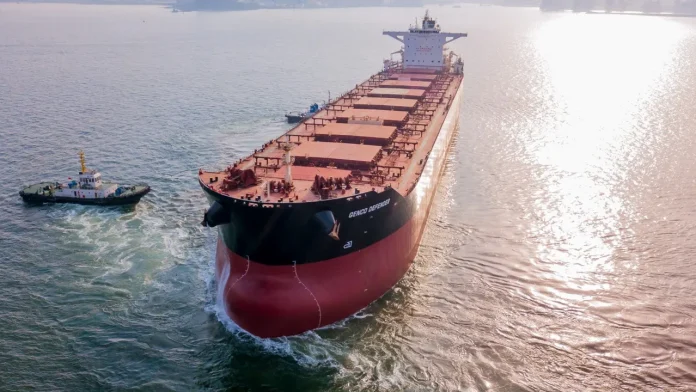Old supramax pair on the chopping block as owner follows strong medium-term fundamentals for the capesize sector.Armed with a new credit facility and faith in the fundamentals of the capesize sector, US-based dry bulk owner Genco is looking to size up its fleet to meet forecast demand for large bulk carriers.Despite recording a net loss of $6.8m for the second quarter, Genco was upbeat about the dry bulk market as its estimated third quarter timecharter earnings were up 17% on the second quarter, driven by capesizes fixed at around $21,000 per day, or 25% more than the Q2 average.
The signing of a $600m revolving credit facility in July upped the company’s borrowing capacity by 50%, and the credit line was quickly put to use. Genco bought a 2020 Imabari-built capesize due for delivery in September/October this year, which it plans to rename Genco Courageous.In the company’s Q2 earnings call, CEO John Wobensmith said the Japanese-built ship was strong in fuel efficiency terms and the installed scrubber made it a well-rounded vessel.“We definitely have more appetite on the capesize sector,” said Wobensmith. “While we’re positive on all the dry bulk vessels, we think the capesize sector has the most compelling supply and demand fundamentals. There is demand growth coming for the larger ships, in terms of iron ore out of West Africa, more bauxite, and we expect even Vale to continue to up their production.
The purchased 2020-built capesize won out against a 2017-built ship the company was also considering at the time, and the decision ultimately came down to cash flows, returns, and price. “[Capesize] values are firm, particularly in modern vessels, but starting the second half of next year, which is when we believe the real demand growth will come from the iron ore front and West Africa, going into very low [vessel] supply in 2027/28, we just see a longer runway,” said Wobensmith.
In fleet terms, the upbeat outlook for capes may spell the end for 2005-built supramaxes Genco Predator and Genco Picardy. Wobensmith said that while the company generally wants to keep its fleet, the two 20-year-old ships are a focus for divesting and he expects to “see a couple more go” by the end of the year.
Expanding on the market fundamentals, Genco’s dry bulk market analyst Michael Orr said significant demand growth expected in 2026 and 2027 could absorb over 200 capesizes, more than the current orderbook for the vessel segment.

